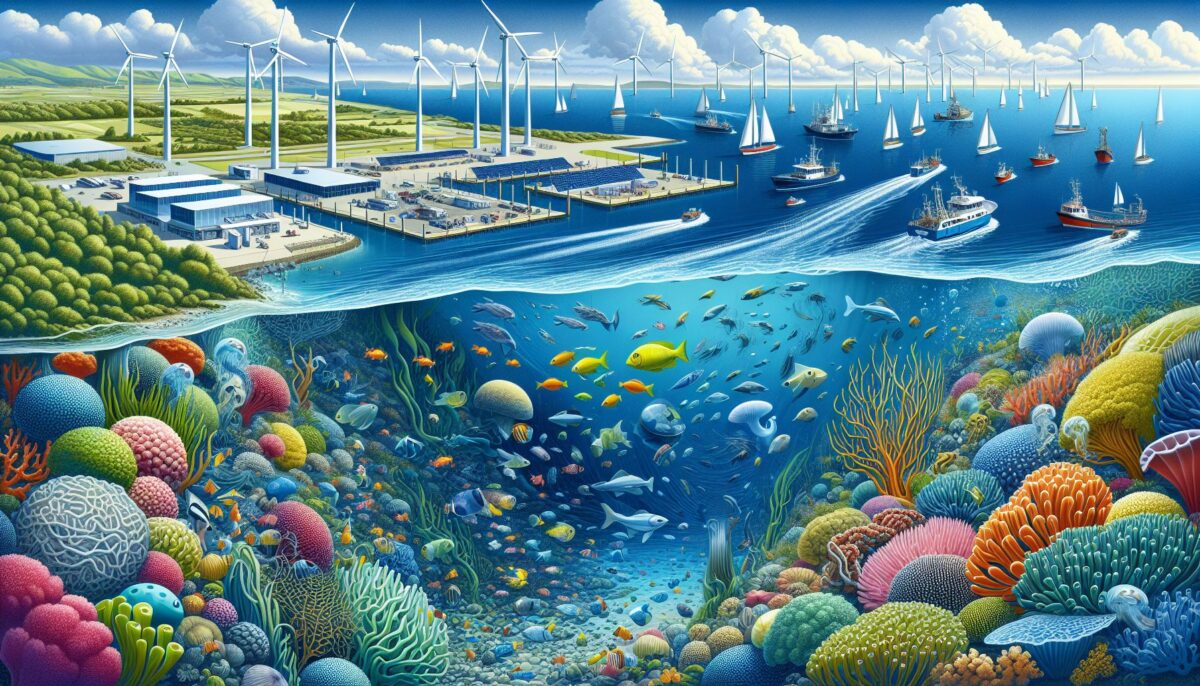The ocean – vast, mystical, and home to approximately 80% of life on our planet[^1^]. It not only harbors a rich biodiversity but also provides countless services from transportation and food production, to tourism and recreational activities. One underappreciated aspect that the ocean offers is an emerging opportunity for sustainable economic development – the Blue Economy.
The Blue Economy is a sustainable use of ocean resources for economic growth, while preserving the health of the ocean ecosystem. This development model encompasses a myriad of sectors including aquaculture, fisheries, marine biotechnology, renewable energy, and maritime transportation. This article aims to demystify what the Blue Economy entails and explore its potential as a game changer in sustainable development.
The Evolving Concept of Blue Economy
The United Nations defines the Blue Economy as a marine-based economic development framework, leading to improved human wellbeing and social equity, reducing environmental risks and ecological scarcities. It is a topical area of economic discourse due to the increasing recognition of the oceans as vital contributors to the global economy.
The term transcends from traditional ocean economies involving offshore oil and gas drilling, shipping, and fishing industries – encompassing emerging sectors like marine renewable energy and aquaculture. However, the conceptual and practical transition from traditional to blue economies is not a straightforward process. It requires significant changes in governance frameworks, innovation, ethical considerations, and active participation by stakeholders.
The Wealth of the Oceans
The marine and coastal environments are abundant with resources that provide multiple services to humans. Fisheries and aquaculture provide food security for billions of people worldwide. The utilization of marine organisms in the discovery and manufacturing of pharmaceuticals is another pivotal benefit of marine biodiversity.
Ocean-based renewable energy is a burgeoning frontier in the energy sector, with technologies harnessing the power of tides, waves, and offshore wind. Offshore drilling for oil and gas diluted with increased adoption of renewable energy still occupies a significant portion of the industry.
The Sustainable Shift
The transition from traditional ocean economies to the Blue Economy must ensure minimal impact on the marine environment while maximizing the potential for economic growth. The implementation of this concept calls for increased regulations, sustainability standards, and transparency. Simultaneously, marine protected areas must exist along with these activities to conserve areas of high biodiversity against anthropogenic threats.
Marine pollution, in particular, emerges as the most significant challenge – originating from both land-based and offshore sources. To combat this, embracing sustainable practices in maritime trade is paramount – reducing waste discharge, minimizing the risk of oil spills, and investing in cleaner fuel options.
Blue Economy: A Future Prospect
The concept of the Blue Economy poses a promising solution for the sustainable future of our planet. It provides a path for reconciling economic development with long-term environmental sustainability. However, balancing this ambitious proposition requires focused decision-making, stringent policies, innovation, and efficient management. With the continual rise in human population, innovation and sustainable use of marine resources can go hand-in-hand to meet the demands of the future.
